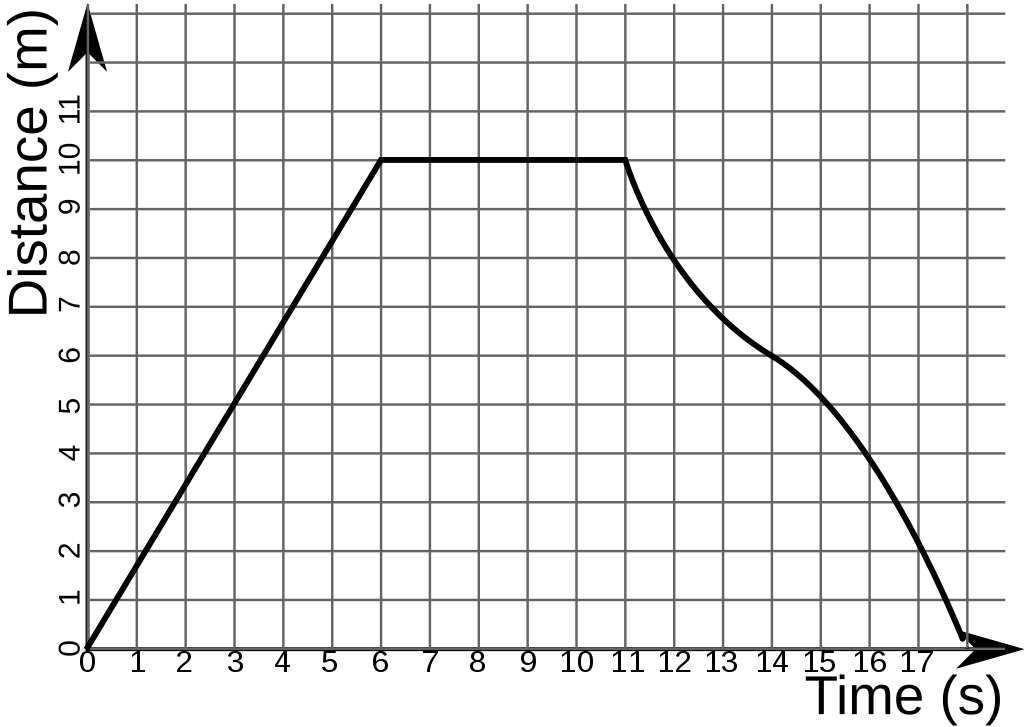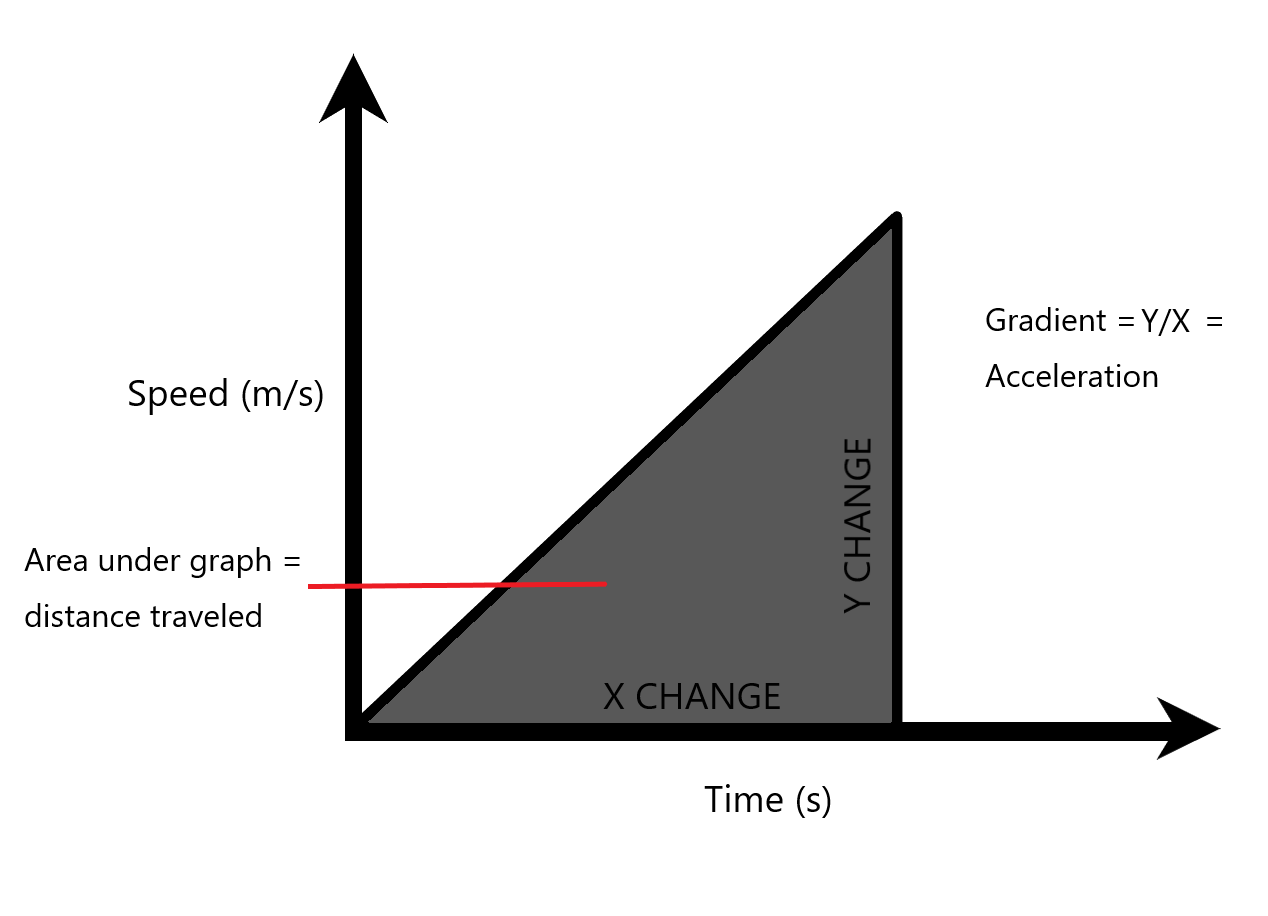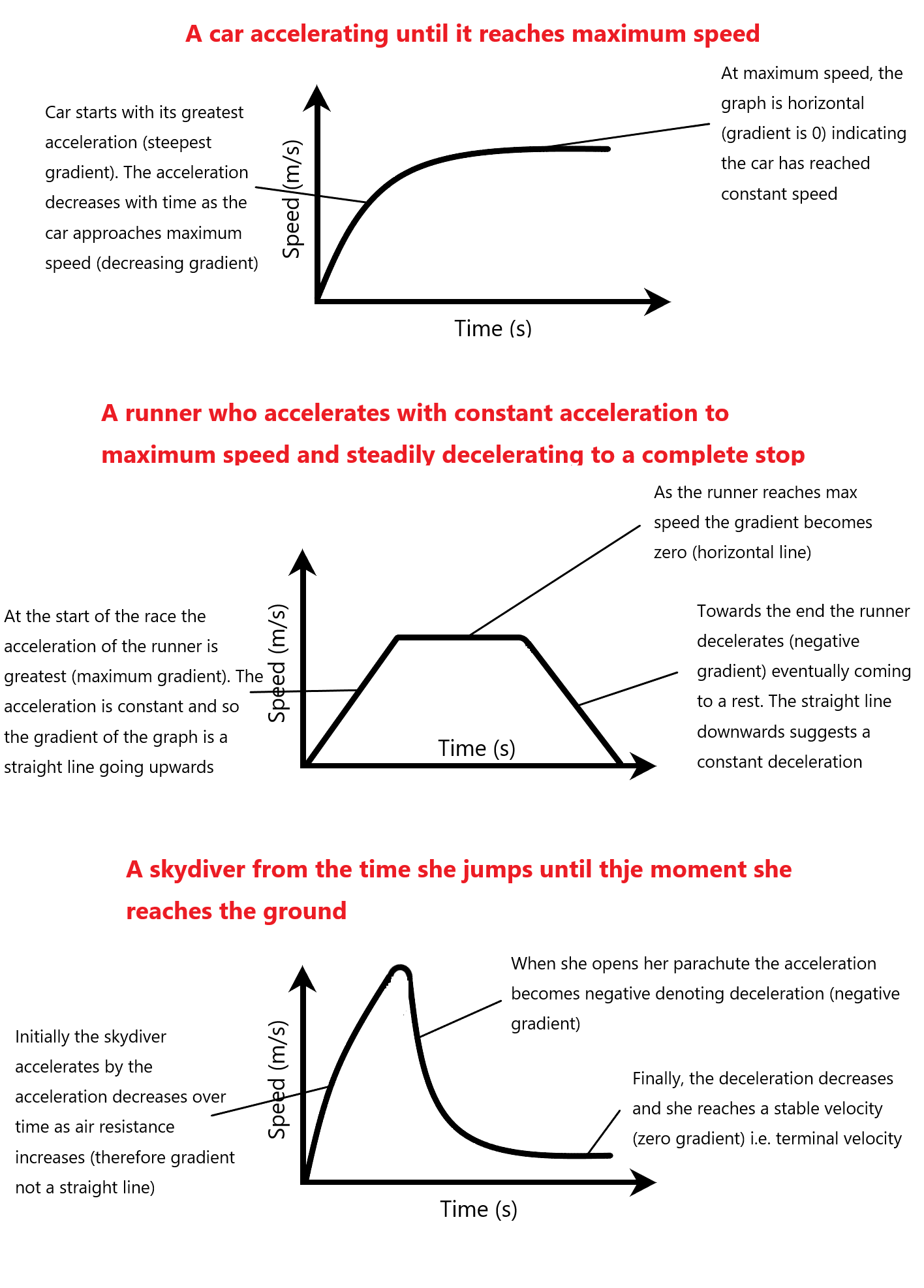Speed and velocity
Speed
The speed of an object is defined as the change in distance per second.

The unit for speed is m/s
Lets imagine you walked from point A to B, and then returned back to A, and it took you 2000 seconds.

You walked a total of 1000m in 2000 seconds and therefore your speed was 1000/2000= 0.50m/s.
Velocity
Speed is a scalar quantity (magnitude only) whereas velocity is a vector quantity (magnitude and direction)
The concept of velocity is basically speed with a direction. The definition of velocity is the rate of change in displacement.
Displacement is also a vector quantity which is defined as distance traveled in a particular direction.

Going back to the example above, the total return distance between A & B is 1000 meters.
However, the direction of travel from A to B is the complete opposite of B to A and therefore they actually cancel each other out when we think in terms of displacement.
In other words, your starting point was A and your ending point was also A. Therefore in that sense, you haven’t actually moved from your original starting point A, and therefore your displacement is actually zero. This means that the velocity will also be 0 as a result (since 0/2000 = 0).
Acceleration
Acceleration is the change in velocity per second, and since velocity is a vector quantity, so is acceleration.

The unit for acceleration is m/s/s
Using the formula above, acceleration can be positive or negative
- Acceleration is positive when an object increases in velocity over time. This is what is generally implied when we state that an object is ‘accelerating’.
- Acceleration is negative when an object decreases in velocity over time. We call this ‘deceleration’.
Free fall and terminal velocity
Any object falling close to the earth surface will be pulled by the earth’s gravity (Fg) causing it to free fall at a constant acceleration of approximately 9.8 m/s/s.
This implies that a free falling body will continuously speed up by 9.8 m/s per second until it hits eventually hits the ground.
However this is not actually the case. As the body accelerates downwards (due to earth’s downward gravitational pull) the air resistance (which opposes gravity) increases (Fd). Eventually the upward force of air resistance will equal the force of gravity (Fg=Fd).
When this happens, the free falling body will stop accelerating and continue falling at a fixed velocity (rather than speeding up by 9.8 m/s per second). We call this terminal velocity.

Plotting & interpreting graphs
Distance-time graphs
A distance time graph plots distance traveled versus time.

The speed of travel (of any particular section of the graph) can be calculated via the gradient.
A gradient is calculated by using this formula:

For example, lets calculate the speed of travel between 0 to 6 seconds on the distance-time graph above.
- The change in X axis = 10m
- The change in Y axis = 6s
- Gradient (speed) = 10/6 = 1.67 m/s
Speed-time graphs
A speed-time graph plots speed against time.

- The distance traveled can be calculated via the area underneath the graph.
- The acceleration can be calculated by the gradient.
Here we demonstrate the appearance of this graph under various conditions.
